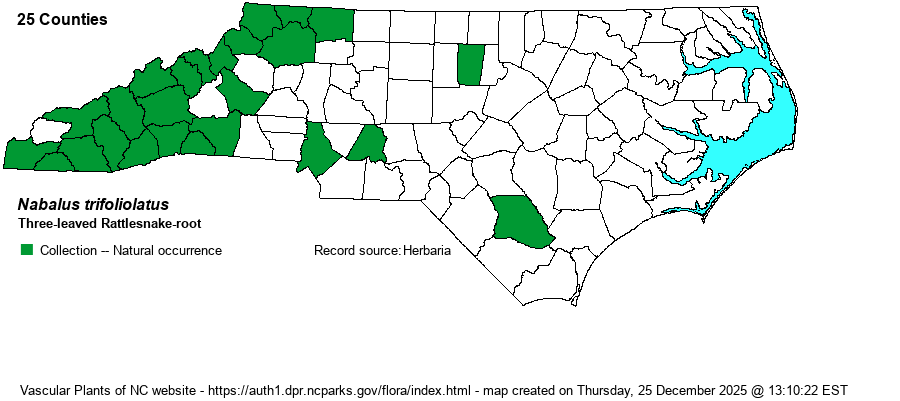Show/Hide Synonym
| taxonName | relationship | relatedTaxonName | relatedTaxonRefText | relComments |
|---|
|
|
| Nabalus trifoliolatus | = | Prenanthes trifoliolata | Gleason and Cronquist (1991) | | | Nabalus trifoliolatus | = | Prenanthes trifoliolata | Flora of North America (1993b, 1997, 2000, 2002a, 2002b, 2003a, 2004b, 2005, 2006a, 2006b, 2006c, 2007a, 2009, 2010) | | | Nabalus trifoliolatus | = | Prenanthes trifoliolata | Gleason (1952) | | | Nabalus trifoliolatus | = | Prenanthes trifoliolata | Kartesz (1999) | | | Nabalus trifoliolatus | = | Prenanthes trifoliolata | | | | Nabalus trifoliolatus | = | Prenanthes trifoliolata | Vascular Flora of the Southeastern States (Cronquist 1980, Isely 1990) | | | Nabalus trifoliolatus | = | Prenanthes trifoliolata | Wofford (1989) | | | Nabalus trifoliolatus | = | Prenanthes trifoliolata | Lack in Kadereit & Jeffrey (2007). Key adapted from C and SE, in part. | | | Nabalus trifoliolatus | > | Prenanthes trifoliolata | Radford, Ahles, and Bell (1968) | | | Nabalus trifoliolatus | > | Prenanthes alba ssp. pallida | Radford, Ahles, and Bell (1968) | | | Nabalus trifoliolatus | > | Prenanthes alba ssp. pallida | | | | Nabalus trifoliolatus | > | Prenanthes trifoliolata var. trifoliolata | Fernald (1950) | | | Nabalus trifoliolatus | = | Nabalus trifoliatus | Small (1933, 1938) | , orthographic variant | | Source: Weakley's Flora |
|

